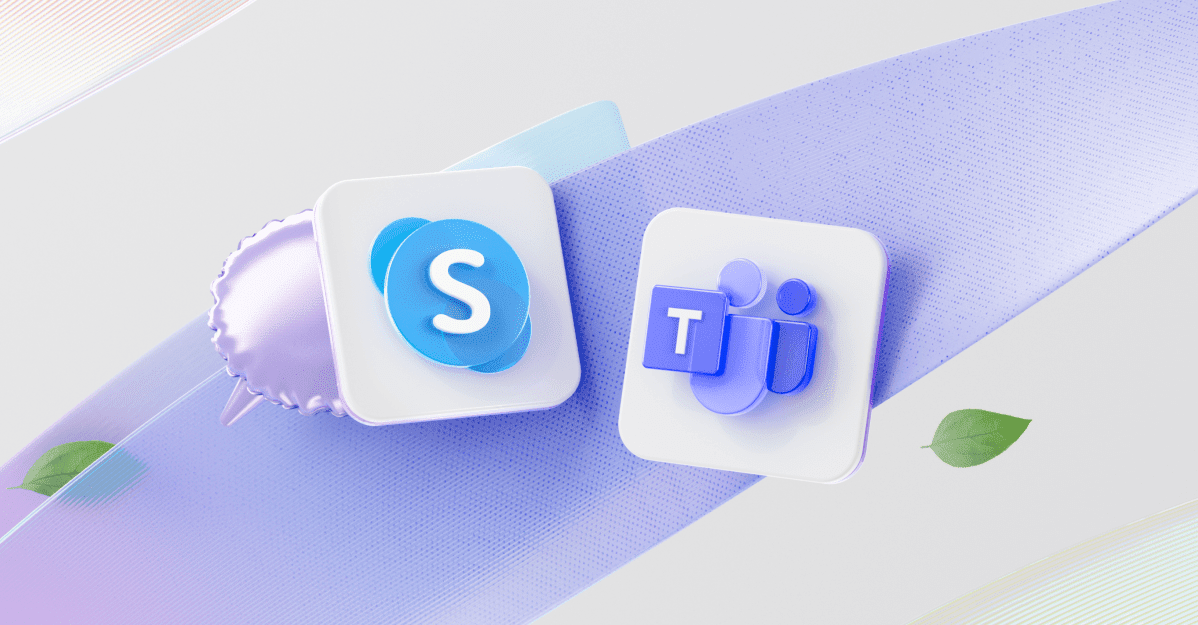
An era is coming to a close as Microsoft is set to retire Skype in May. The platform will be replaced by the complimentary version of Microsoft Teams tailored for personal users. Current Skype members will have the option to log into Microsoft Teams, where they can find their message histories, group conversations, and contact lists readily accessible—no new account creation needed. Alternatively, users can choose to export their data if they prefer.
According to Jeff Teper, the head of Microsoft 365 collaborative applications and platforms, “Skype users will have control over their transition. They can decide to transfer their conversation histories and contacts elsewhere or choose to migrate to Teams.” This flexibility offers a seamless transition for users.
If you decide to move on and take your Skype data with you, the exported information will encompass photos and chat history. Moreover, Microsoft has developed a tool that allows you to easily access existing Skype chat history for those who opt not to switch to Teams.
Skype will continue to operate until May 5th, giving current users approximately 60 days to determine whether to transition to Microsoft Teams or export their data. “The initial setup on Teams is quick and efficient, as we’ve already streamlined the backend processes to retain their contacts, message histories, and call logs,” adds Amit Fulay, Microsoft’s VP of product.
Users transitioning to Microsoft Teams will retain their existing Skype group chats. During this 60-day shift period, Microsoft will ensure that messaging between Teams and Skype contacts remains functional, allowing seamless communication between the two platforms.
However, moving to Microsoft Teams means losing a significant feature of Skype. Microsoft will discontinue the ability to call domestic or international numbers, a change influenced by usage trends observed over time. “This feature was once essential before VoIP became commonplace and mobile data plans were costly,” explains Fulay. “Looking ahead, we see this not as a direction where we want to focus our effort.”
While Microsoft will honor current Skype credits, new users will no longer have access to paid features for making or receiving calls. Existing users with subscriptions can utilize their Skype credits and services within Microsoft Teams until their current renewal period concludes. Those holding Skype numbers will need to migrate their numbers to a different provider, as Microsoft will no longer support this service.
The Skype Dial Pad will temporarily remain accessible in Teams for users with existing credits and subscriptions; however, Microsoft will not introduce consumer calling plans akin to those offered to businesses. “The world has progressed,” states Teper. “Advances in bandwidth and reduced data plan costs have shifted nearly all usage to VoIP services.”
The consumer migration away from traditional phone number calling via Skype reflects the broader market shifts that have contributed to its closure nearly 14 years after Microsoft acquired it for $8.5 billion. In recent years, competing platforms like FaceTime, Messenger, and WhatsApp have made it easier to communicate with friends through messaging, calling, and video chatting—areas where Microsoft has struggled to keep up with Skype.
This became particularly apparent during the early phases of the covid-19 pandemic, as users flocked to Zoom rather than Skype. “While the Skype user base initially grew at the pandemic’s onset, it has been stagnant since,” admits Teper. “It hasn’t dramatically decreased, but it has remained relatively stable over the past few years. We hope to transition the majority of Skype users… but we want to ensure users feel empowered in their choices.”
Microsoft is redirecting its full attention to Teams for consumers, following the launch of a personal version in 2020. Although Microsoft previously claimed full commitment to Skype, it has been increasingly apparent that preparations were underway for its eventual discontinuation. Recently, they phased out Skype credits and phone numbers in favor of a subscription model, indicating that Skype’s end was approaching.
“Initially, our goal was to consolidate work and life experiences,” reveals Teper. “However, Teams was a new initiative that didn’t reflect our reality in 2020. Thus, we continued to support Skype, but two to three years ago, we started integrating the free Teams consumer experience with a revamped client. We wanted to wait for sufficient adoption before proceeding.”
The cessation of Skype will not immediately affect job security for its team. “There is a unified team responsible for both Microsoft Teams and Skype. They have adapted to a common structure,” states Teper. “Layoffs are not anticipated; team members will focus on enhancing features—whether that means improving user experience or innovating with AI technology, the emphasis will be on expanding Teams.”










